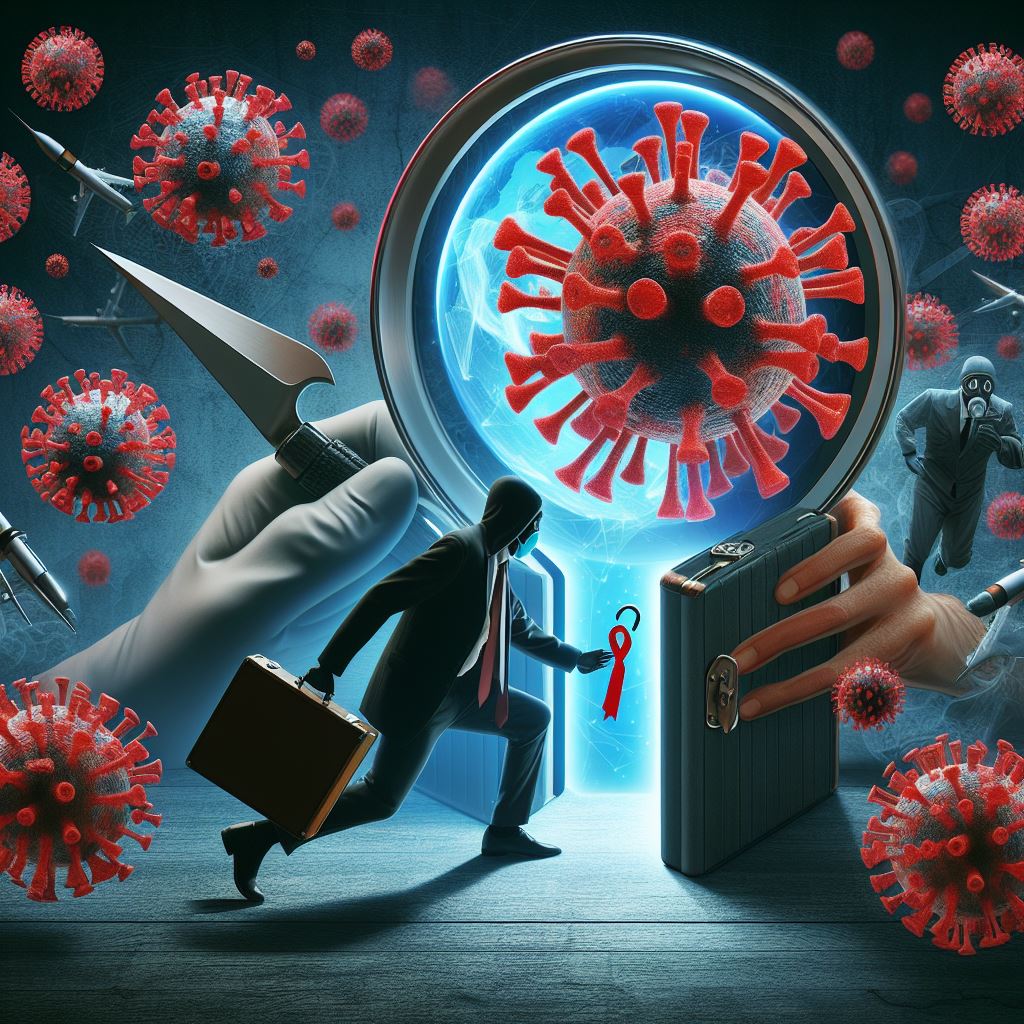A new shadow has crept into the ever-evolving landscape of the pandemic – the JN.1 coronavirus. Its emergence has ignited a flurry of questions and anxieties, leaving us all grappling with the same chilling uncertainty: how dangerous is it, really?
Before we delve into the nitty-gritty, let’s establish some ground rules. JN.1 is a novel coronavirus, meaning it’s brand new to our immune system. Unlike its infamous cousin, SARS-CoV-2, JN.1 has a distinct genetic makeup and exhibits unique characteristics that necessitate cautious analysis.
The Murky Waters of Origin:
The origin story of JN.1 remains shrouded in mystery. Initial reports suggest animal-to-human transmission, but the specific reservoir host is still under investigation. This lack of clarity fuels concerns about potential mutations and zoonotic spillover, further escalating the sense of unease.
The Worrying Whispers of Transmission:
Early data indicates JN.1 spreads efficiently through respiratory droplets, similar to its viral predecessors. However, some alarming observations suggest potential airborne transmission, a factor that could significantly impact its spread and containment. The jury’s still out on whether it surpasses the transmissibility of SARS-CoV-2, but the possibility alone is enough to send shivers down spines.
The Unmasking of Symptoms:
The clinical picture of JN.1 infection is still being painted. While the usual suspects like fever, cough, and fatigue are present, some reports hint at unusual neurological symptoms like seizures and delirium. This atypical presentation complicates diagnosis and raises concerns about long-term health implications.
The Looming Shadow of Severity:
The true danger of any virus lies in its severity. Unfortunately, in the case of JN.1, we’re still in the dark. Initial data suggests comparable hospitalization rates to COVID-19, but the true picture might be obscured by limited testing and reporting. The potential for severe cases and fatalities remains a chilling unknown.
The Race for Answers:
Scientists are working tirelessly to unravel the mysteries of JN.1. Extensive genomic sequencing, epidemiological studies, and vaccine development are underway, but the answers won’t come overnight. This period of uncertainty is understandably unnerving, but it’s crucial to remember that knowledge is power.
Navigating the Storm: What You Can Do:
While the scientific community battles for answers, we as individuals can take proactive steps to mitigate the risk and protect ourselves:
- Stay informed: Follow credible sources for updates on JN.1 and its progression. Avoid misinformation and sensationalized reporting.
- Practice preventive measures: Maintain good hygiene, wear masks in crowded settings, and social distance whenever possible.
- Get vaccinated: Vaccination remains our strongest defense against viral threats. Stay up-to-date with recommended jabs.
- Seek medical help: If you experience any symptoms suggestive of JN.1 infection, don’t hesitate to consult a healthcare professional.
A Call for Collective Action:
The emergence of JN.1 serves as a stark reminder of the interconnectedness of our world. Viruses don’t recognize borders, and their threat demands a global response. International cooperation, resource sharing, and scientific collaboration are paramount to defeating this new foe.
The Final Word:
The future of JN.1 remains uncertain, but one thing is clear: we can’t afford complacency. By staying informed, taking preventative measures, and supporting the scientific community, we can navigate this storm together. Remember, knowledge is our shield, and vigilance our armor. Let’s face this challenge with courage, resilience, and a shared commitment to protecting ourselves and each other.


